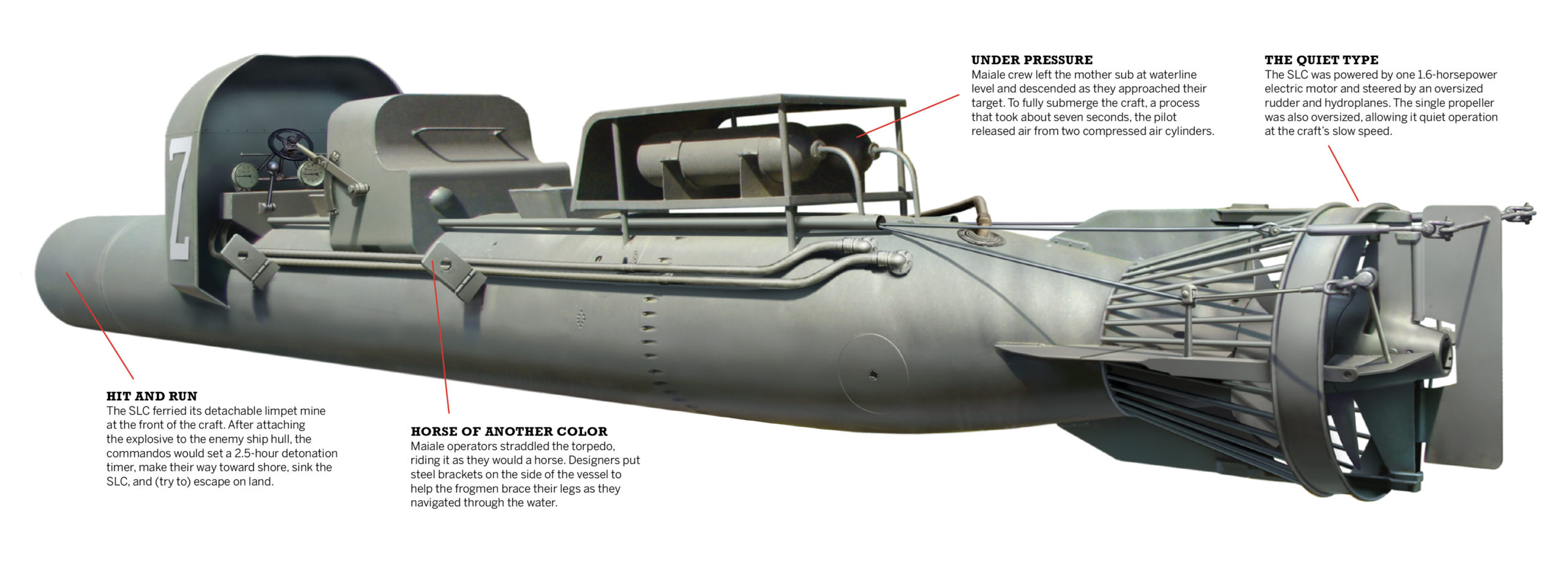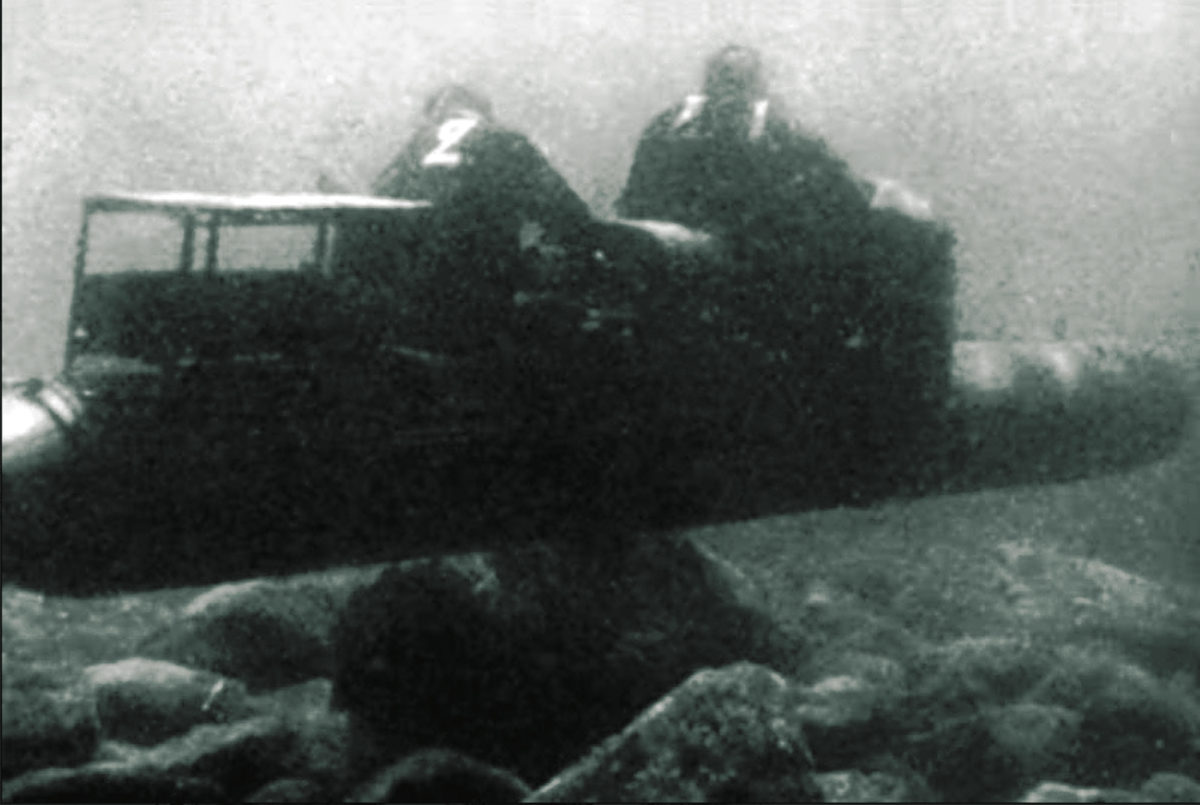There are submarines, there are mini-submarines, and then there are human torpedoes. Developed by the Italians in the 1930s, human torpedoes—called SLCs (from the Italian for “slow-running torpedo”) and nicknamed Maiale (“pig”)—were manned, navigable submersibles designed for surprise mine attacks on enemy ships anchored in port. Several series were produced.
Launched from a nearby sub, two Italian marine commandos would sit astride the torpedo and quietly putter along the waterline at about two knots toward the harbor. The frogmen would then descend underwater, cut through any anti-submarine netting guarding the port, and clamp mines onto the hulls of the target ships.
The key to the operation was secrecy—the commandos were (half literally) sitting ducks astride their slow-moving weapon; if the submariners were discovered, or if word of their mission had leaked out, they could easily be captured or killed. The Italian SLC corps ended up suffering significant losses during the war.
But they also had their moments: on December 19, 1941, three Maiali attacked several Royal Navy vessels in Alexandria harbor in Egypt. All six Italian frogmen were eventually captured, but two British battleships, HMS Valiant and HMS Queen Elizabeth, were seriously damaged and put out of commission until major repairs were made. Britain gave up its naval supremacy in the central Mediterranean for many months thereafter.
Suitably impressed, the British emulated the design with their own human torpedo, dubbed the Chariot. The German version, the semi-submersible Neger, cruised along the waterline at night. And the Japanese, in their inimitable style, developed a suicide human torpedo, the Kaiten, toward war’s end. The SLC bowed out of the war along with Italy in 1943.







